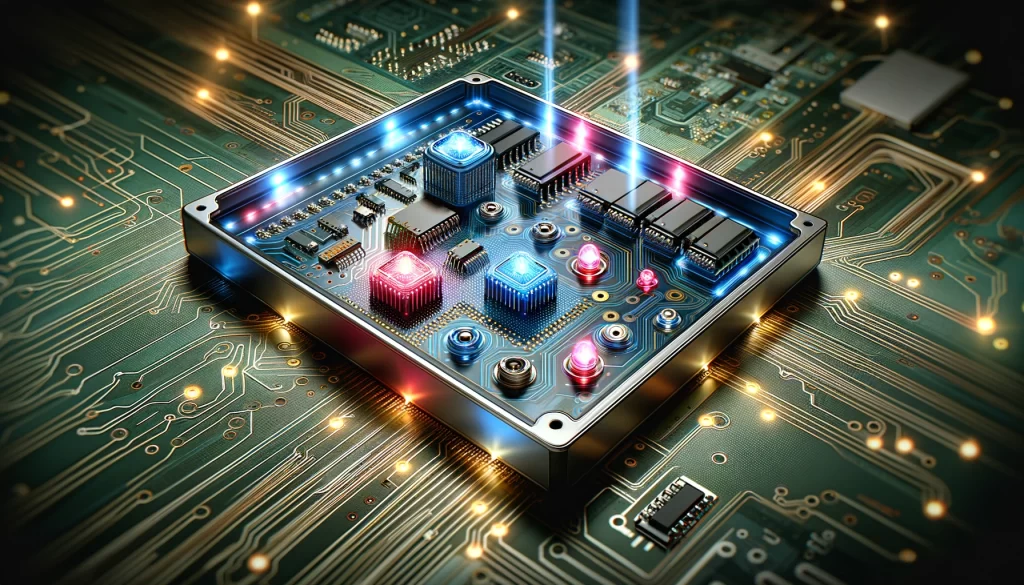Introduction
Static discharge can be a significant challenge in the design and operation of membrane switches. For manufacturers like ElastoKey, understanding and addressing this issue is crucial to ensure the reliability and longevity of their products. This comprehensive guide covers various aspects of static discharge in membrane switch design, offering insights and strategies to mitigate its impact.
Understanding Static Discharge
Static Discharge Basics: Static electricity is the accumulation of electric charge on the surface of materials. When two different materials come into contact, electrons can transfer from one to the other, leading to an imbalance. This imbalance can cause a sudden discharge of electricity when a conductive path is provided.
Implications for Membrane Switches: In membrane switches, static discharge can lead to several issues, including circuit damage, malfunctions, and reduced lifespan. It’s particularly problematic in environments where the switch is frequently touched or in dry conditions that promote static build-up.
Design Strategies to Mitigate Static Discharge
Material Selection: Choosing materials with inherent anti-static properties or treating surfaces with anti-static coatings can reduce the tendency for static build-up. For instance, using polyester with anti-static coatings for the overlay can be effective.
Circuit Design and Grounding: Integrating proper grounding techniques in the circuit design can help in safely dissipating static charges. This includes creating paths that lead static electricity away from sensitive components.
Shielding Layers: Incorporating conductive layers within the membrane switch that act as shields can protect the internal circuits from static discharges.
Implementation in Membrane Switches
Incorporating Conductive Traces: Adding conductive traces or layers that connect to the ground can provide a safe path for static electricity to dissipate.
Surface Treatments: Surface treatments like anti-static sprays or coatings can be applied to the outer layers of the membrane switch to prevent static build-up.
Capacitive Sensing: Using capacitive sensing technology can help in managing static discharge. These switches are designed to handle static electricity more effectively than traditional resistive touch switches.
Addressing Environmental Factors
Humidity Control: Maintaining a certain level of humidity in the environment where the membrane switch is used can significantly reduce static build-up. Humid air is less conducive to static electricity than dry air.
Static Control Devices: In industrial settings, using static control devices such as ionizers can help neutralize the static charges in the environment.
Testing and Compliance
ESD Testing: Regular electrostatic discharge (ESD) testing is vital to ensure the membrane switch can withstand static discharges without malfunctioning.
Compliance with Standards: Adhering to international standards such as the Electrostatic Discharge Association (ESDA) standards is important for ensuring safety and reliability.
Innovative Technologies in Static Management
Nanomaterials: The use of nanomaterials in membrane switches can enhance their static dissipative properties. These materials can be integrated into the overlay or the conductive layers.
Smart Circuit Design: Developing smart circuits that can detect and manage static discharge autonomously can significantly enhance the reliability of membrane switches.
User Education and Handling
Handling Procedures: Educating users on proper handling and use of membrane switches to minimize the risk of static discharge. This includes avoiding contact with the switch when charged or in a highly static environment.
Maintenance Recommendations: Providing guidelines on maintaining the membrane switch to ensure its anti-static properties remain effective. This includes regular cleaning and checks for wear and tear.
Customization for Specific Applications
Industry-Specific Solutions: Customizing the design and materials of the membrane switch to suit specific industry requirements, such as in electronics or medical devices where static discharge can be particularly problematic.
Collaboration with Clients: Working closely with clients to understand their specific needs and environments can lead to more effective static management solutions in membrane switches.
Conclusion
Addressing static discharge in membrane switch design is a multifaceted challenge that requires a comprehensive approach. By incorporating suitable materials, design strategies, environmental controls, and user guidelines, manufacturers like ElastoKey can significantly mitigate the risks associated with static electricity. Continued innovation and adherence to standards are key to ensuring the reliability and safety of membrane switches in various applications.




